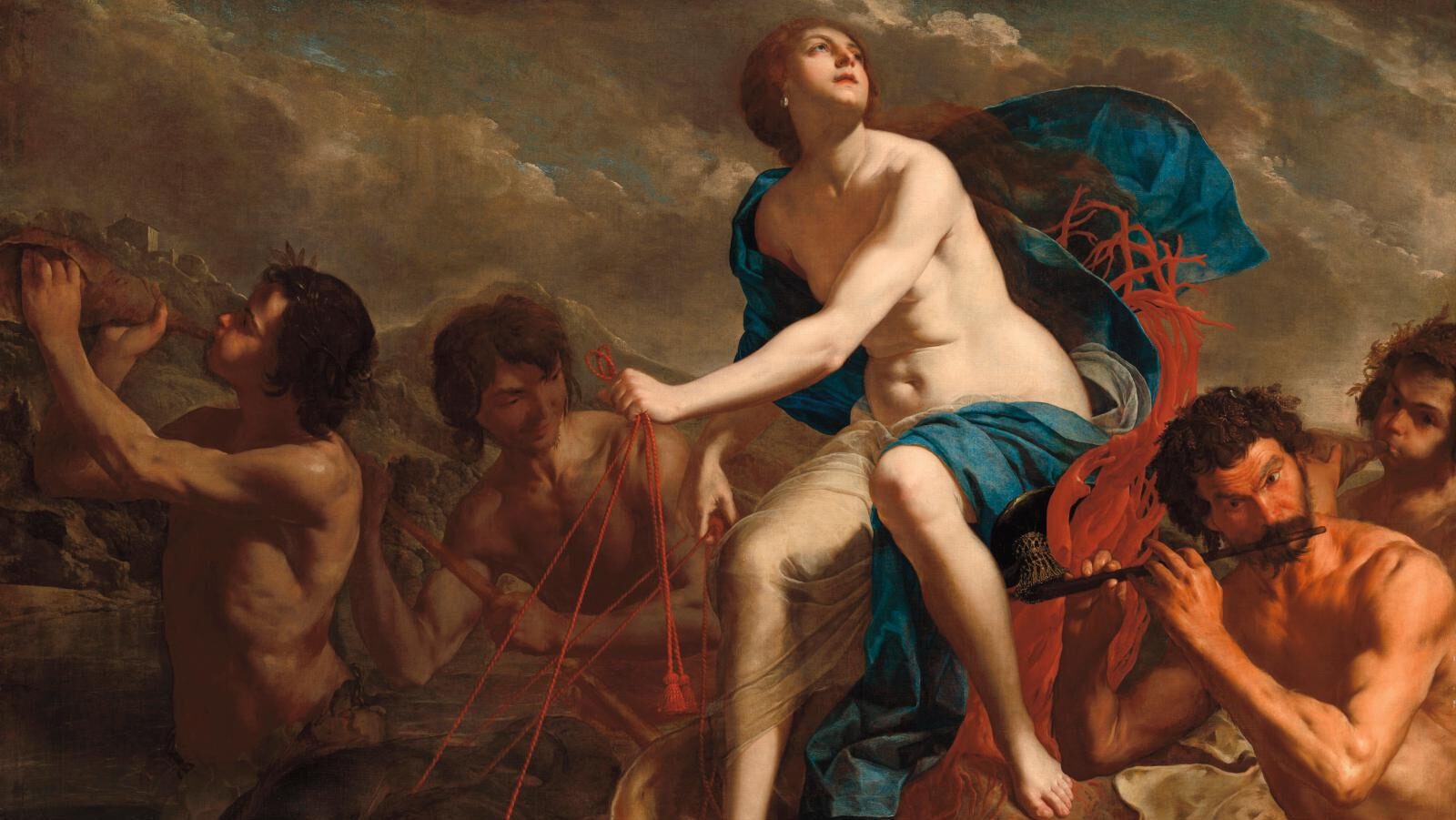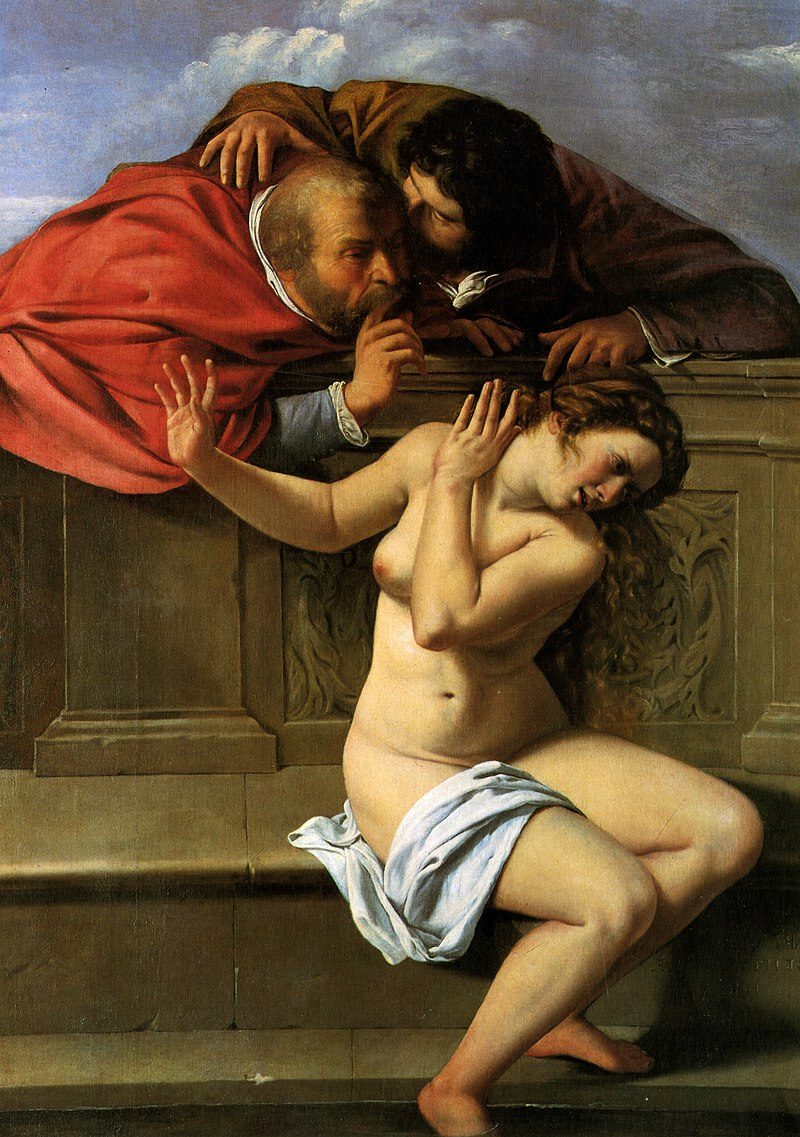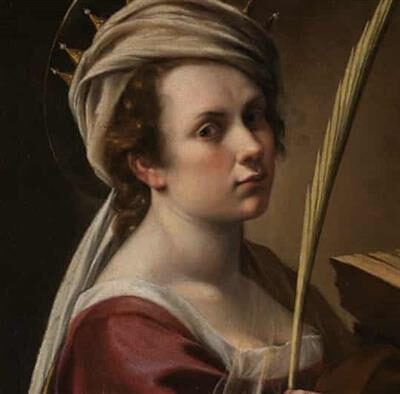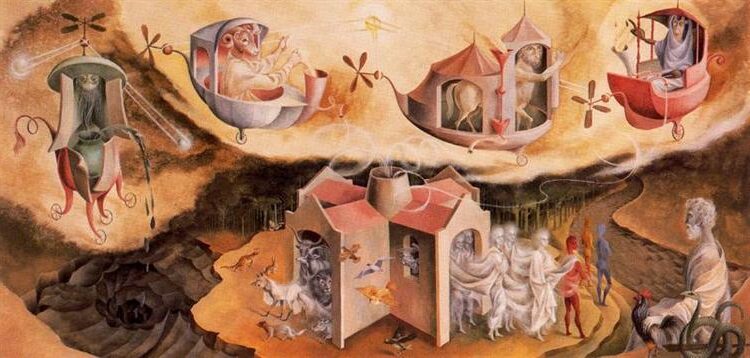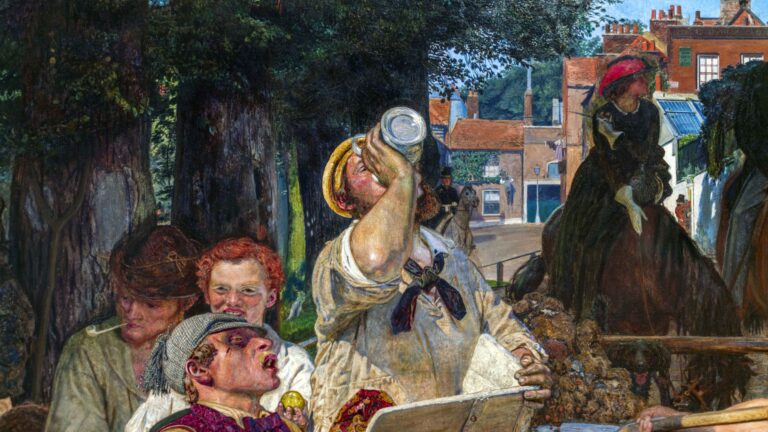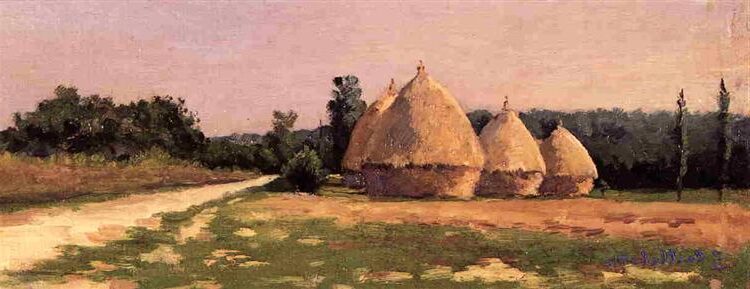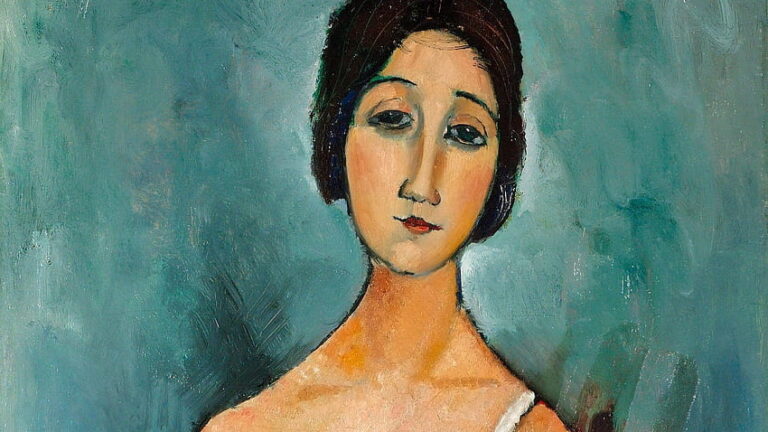Artemisia Gentileschi, Painter: The Baroque Master Who Broke Barriers in Art History
Born: 8 July 1593, Rome, Papal States
Death: c. 1656, Naples, Spanish Empire
Art Movement: Baroque
Nationality: Italian
Influenced By: Orazio Gentileschi (Her Father)
Artemisia Gentileschi, Painter: The Baroque Master Who Broke Barriers in Art History
Early Life and Development as an Artist
Artemisia Gentileschi was born in Rome on July 8, 1593, as the eldest of five children and the only daughter of painter Orazio Gentileschi. Her artistic talents emerged early, with professional work appearing by age 15.
Influences and Training
Artemisia’s formal artistic education began under her father’s guidance in his workshop. Orazio, a follower of Caravaggio, exposed her to the dramatic lighting and realistic style that would influence her work throughout her career.
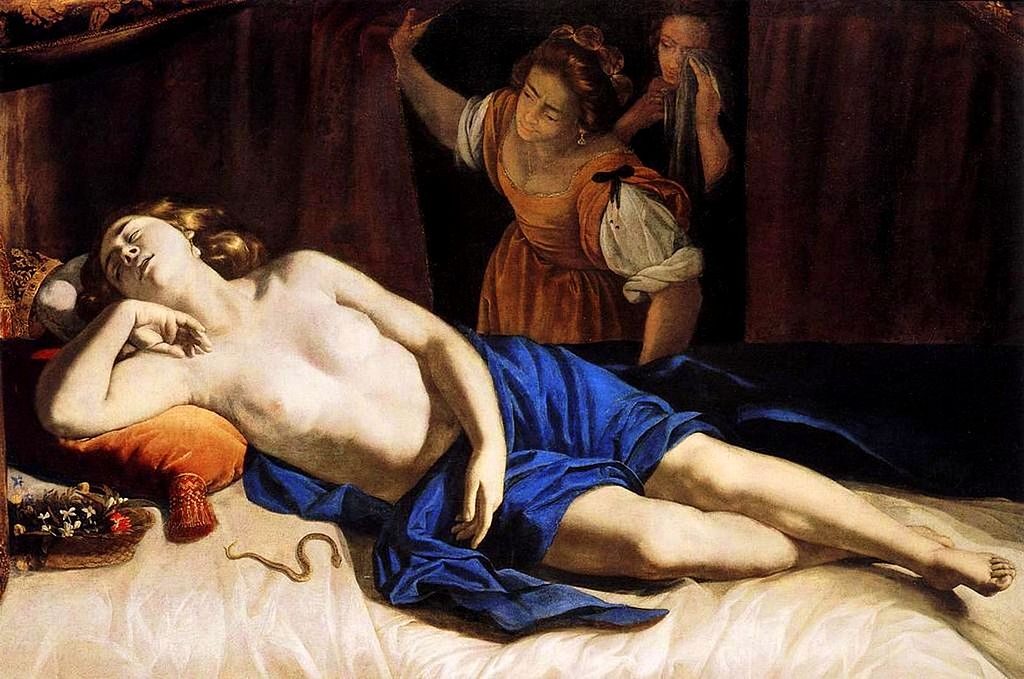
Cleopatra (1633–1635) by Artemisia Gentileschi
Her father recognized her exceptional talent and arranged for her to learn techniques that were typically reserved for male artists during the Late Renaissance and Early Baroque periods.
Rome provided a rich artistic environment for young Artemisia. She studied anatomy, perspective, and color theory – subjects not normally taught to women at that time. The works of Caravaggio particularly influenced her dramatic use of chiaroscuro (light and shadow).
By her teenage years, she had developed remarkable technical skills. Her early paintings already showed her distinctive approach to composition and emotional intensity.
Collaboration with Orazio Gentileschi
Artemisia worked closely with her father in his workshop, learning the family trade. Together, they completed several commissions, with Artemisia’s contributions often indistinguishable from her father’s – a testament to her technical abilities.
Their collaborative relationship allowed Artemisia to gain practical experience in the business of art. She learned how to manage commissions, prepare canvases, and mix pigments under Orazio’s guidance.
This partnership helped establish her credentials in a male-dominated field. As her father’s reputation grew in Rome’s artistic circles, Artemisia gained valuable connections with potential patrons.
However, their styles eventually diverged. While Orazio maintained a more reserved approach, Artemisia developed a bolder, more emotionally intense style that would become her signature after she eventually left Rome for Florence around 1614.
Pivotal Works and Artistic Milestones
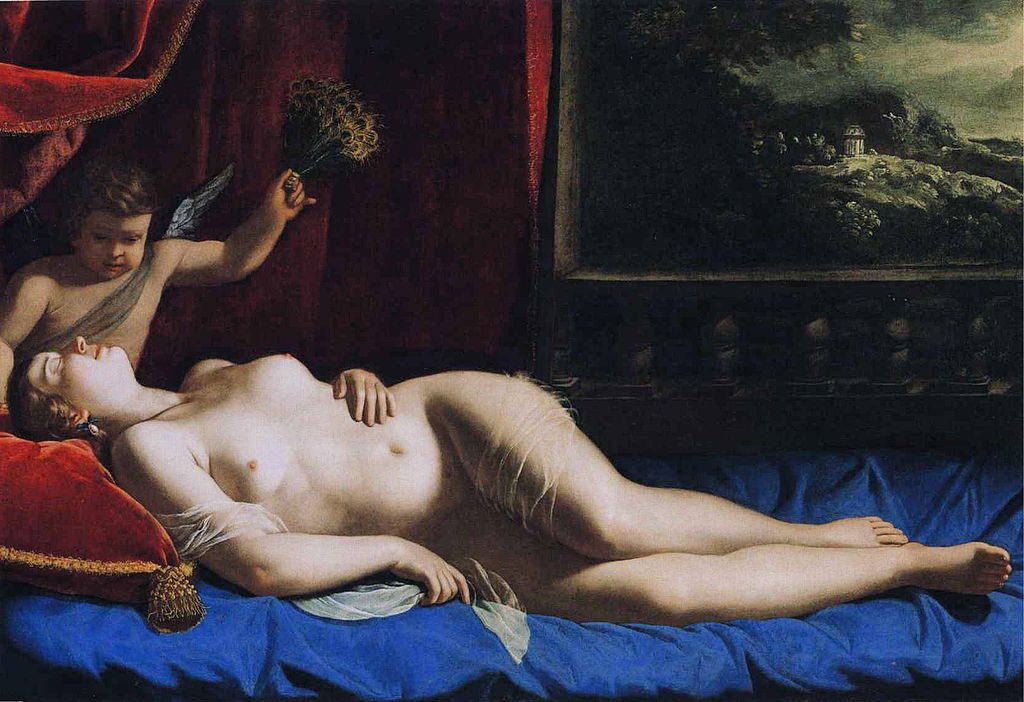
Venus and Cupid (c. 1625–1630) by Artemisia Gentileschi
Artemisia Gentileschi created powerful paintings that established her as a leading Baroque artist during a time when few women could pursue artistic careers. Her dramatic use of light and shadow, along with her compelling portrayals of strong female figures, became hallmarks of her distinctive style.
Artemisia’s Signature Style and Themes
Gentileschi’s most famous work, “Judith Slaying Holofernes” (c. 1620), depicts the biblical heroine with unflinching realism as she beheads the Assyrian general. Unlike her male contemporaries, Artemisia portrayed Judith as physically powerful and determined. This painting exemplifies her mastery of chiaroscuro—the dramatic contrast between light and dark.
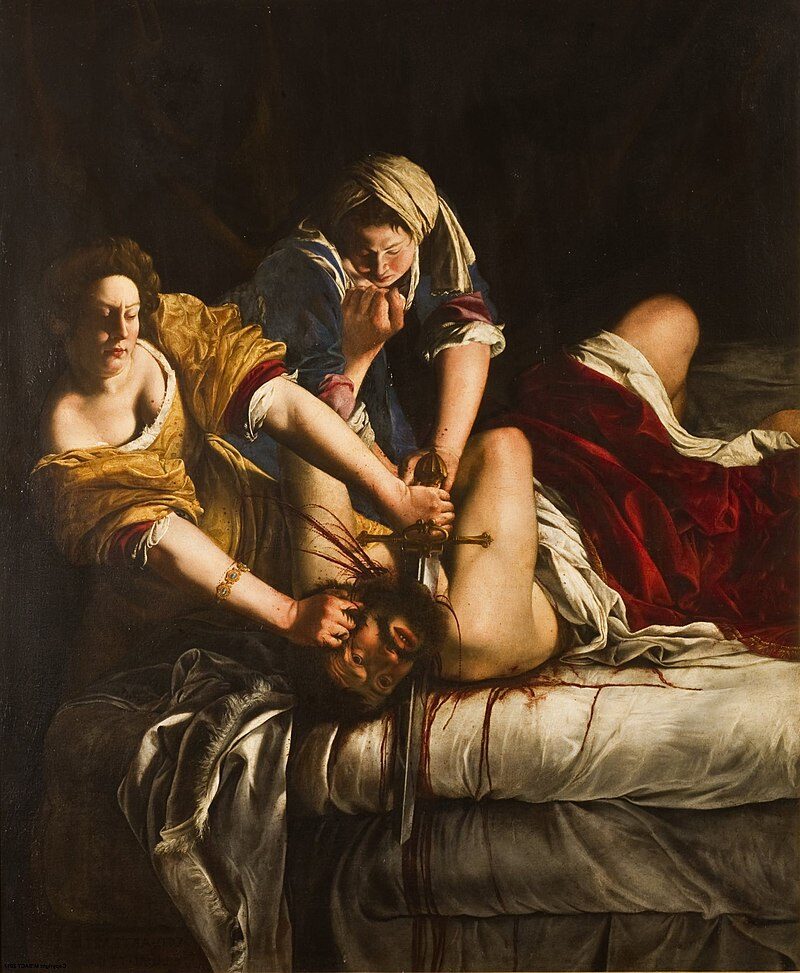

Her interpretation of “Susanna and the Elders” (1610) shows her talent at just seventeen. Instead of the traditional voyeuristic approach, she captured Susanna’s genuine distress and vulnerability.
“Self-Portrait as the Allegory of Painting” (1638-39) stands as one of her most personal works. In it, she presented herself as the embodiment of painting itself—a bold statement about her professional identity.
Notable Exhibitions and Public Collections
Artemisia’s work has gained significant recognition in recent decades. The National Gallery in London held a major exhibition of her paintings in 2020, drawing unprecedented attention to her artistic contributions.
This exhibition featured her “Self Portrait as Saint Catherine of Alexandria,” acquired by the gallery for £3.6 million in 2018.
Her paintings appear in prestigious collections worldwide. The Uffizi Gallery in Florence houses her “Judith and Her Maidservant,” while Naples’ Capodimonte Museum displays several important works from her time in that city.
During her lifetime, Artemisia achieved remarkable success, securing commissions across Italy and even from Charles I of England. Her time in Venice, Rome, and Naples resulted in stylistic evolutions that reflected her growth as an artist and her adaptation to different regional tastes.
Personal Triumphs and Trials

Esther before Ahasuerus (c. 1628–1635) by Artemisia Gentileschi
Artemisia Gentileschi faced significant challenges as a female artist in 17th century Italy. Her determination and talent helped her overcome these obstacles to achieve remarkable success in a male-dominated profession.
The Trial of Agostino Tassi
In 1611, at age 17, Artemisia was raped by Agostino Tassi, a painter working with her father. When Tassi refused to marry her as promised, Artemisia’s father brought charges against him, leading to a seven-month trial in 1612.
The court proceedings were brutal for Artemisia. She underwent torture with thumbscrews to “verify” her testimony, a common practice for women accusers at the time. Despite this trauma, she bravely maintained her accusations.
Though Tassi was found guilty, he served minimal punishment. The trial transcripts reveal Artemisia’s strength and determination, as she firmly declared, “It is true, it is true, it is true,” when questioned about the assault.
This traumatic experience influenced her art, particularly in powerful works like “Judith Slaying Holofernes,” where many scholars see her processing her trauma through biblical imagery.
Advocacy for Female Artists
Following the trial, Artemisia built an extraordinary career that broke barriers for women in art. She became the first female member accepted into Florence’s prestigious Accademia di Arte del Disegno in 1616.

Jael and Sisera (c. 1620) by Artemisia Gentileschi
Artemisia gained powerful patrons including Cosimo II de’ Medici and even corresponded with Galileo Galilei. Her success allowed her to operate her own independent studio and train other female artists, an unprecedented achievement at that time.
She commanded prices equal to her male counterparts and developed a distinctive style that showcased strong female figures. Throughout her career, she painted women with agency and power, often depicting biblical heroines like Judith, Esther, and Bathsheba.
Her advocacy opened doors for future female artists. In letters to patrons, she often emphasized her unique position as a woman portraying female subjects with authenticity and depth.
Frequently Asked Questions
Artemisia Gentileschi broke barriers as the most celebrated female artist of the 17th century. Her powerful works often depicted strong female protagonists and reflected her personal experiences in a male-dominated world.
What themes did Artemisia Gentileschi explore in her artwork?
Artemisia frequently depicted powerful biblical and mythological women in moments of strength and determination. Her paintings often showcased female protagonists taking control of their situations.
Violence against women appeared regularly in her works, notably in her famous “Judith” series where women enact revenge against male oppressors.
Many art historians connect these themes to her personal trauma following her rape by Agostino Tassi when she was a teenager. This experience shaped her artistic vision and fueled her portrayal of women as agents rather than victims.
Where can one find Artemisia Gentileschi’s paintings on display today?
Major works by Artemisia can be found at the National Gallery in London, which holds some of her most significant paintings including “Self-Portrait as Saint Catherine of Alexandria.”
The Uffizi Gallery in Florence displays her dramatic “Judith Slaying Holofernes,” one of her most famous works showcasing her mastery of Caravaggio’s dramatic lighting techniques.
Other important collections featuring her art include the Pitti Palace in Florence, the Metropolitan Museum of Art in New York, and the Capodimonte Museum in Naples.
How did Artemisia Gentileschi’s relationship with her father influence her work as an artist?
Artemisia’s father, Tuscan painter Orazio Gentileschi, provided her early artistic training since women were barred from formal art education. His Caravaggesque style heavily influenced her technical approach.
When her mother died when Artemisia was just 12, her father’s workshop became even more central to her development. He recognized her talent and arranged private tutoring for her.
The professional relationship with her father helped establish her career, as he introduced her to patrons and artistic circles. Their styles were so similar early on that some works were misattributed between them.
What are some of the most iconic self-portraits by Artemisia Gentileschi?
“Self-Portrait as the Allegory of Painting” stands as one of her most powerful statements. In this work, she portrays herself as the embodiment of the art of painting, a bold claim for a female artist of her time.
“Self-Portrait as Saint Catherine of Alexandria” shows her identifying with the martyred saint, possibly reflecting her own suffering after her traumatic court case.
“Self-Portrait as a Lute Player” demonstrates her versatility and skill in portraiture while showcasing her ability to capture complex emotional states.
What made Artemisia Gentileschi a significant figure in the Baroque art movement?
Artemisia mastered the dramatic lighting techniques of Caravaggio, known as tenebrism. Her paintings display striking contrasts between light and dark that create intense emotional impact.
She was the first woman accepted into Florence’s prestigious Accademia delle Arti del Disegno, breaking significant gender barriers in the professional art world.
Her technical excellence earned her commissions from powerful patrons including the Medici family and King Philip IV of Spain, establishing her as a leading artist regardless of gender.
What is the historical impact of Artemisia Gentileschi’s body of work on female artists?
Artemisia created a path for future women in art. She demonstrated that females could execute large-scale history paintings. This genre was previously considered beyond women’s capabilities.
Her success challenged prevailing notions about women’s artistic talents. It also provided a precedent for female artists to aspire to professional careers.
Art historians now recognize her as a pioneer who created space for women in the artistic canon. Her rediscovery in the 20th century has inspired contemporary feminist artists to explore themes of female empowerment.

